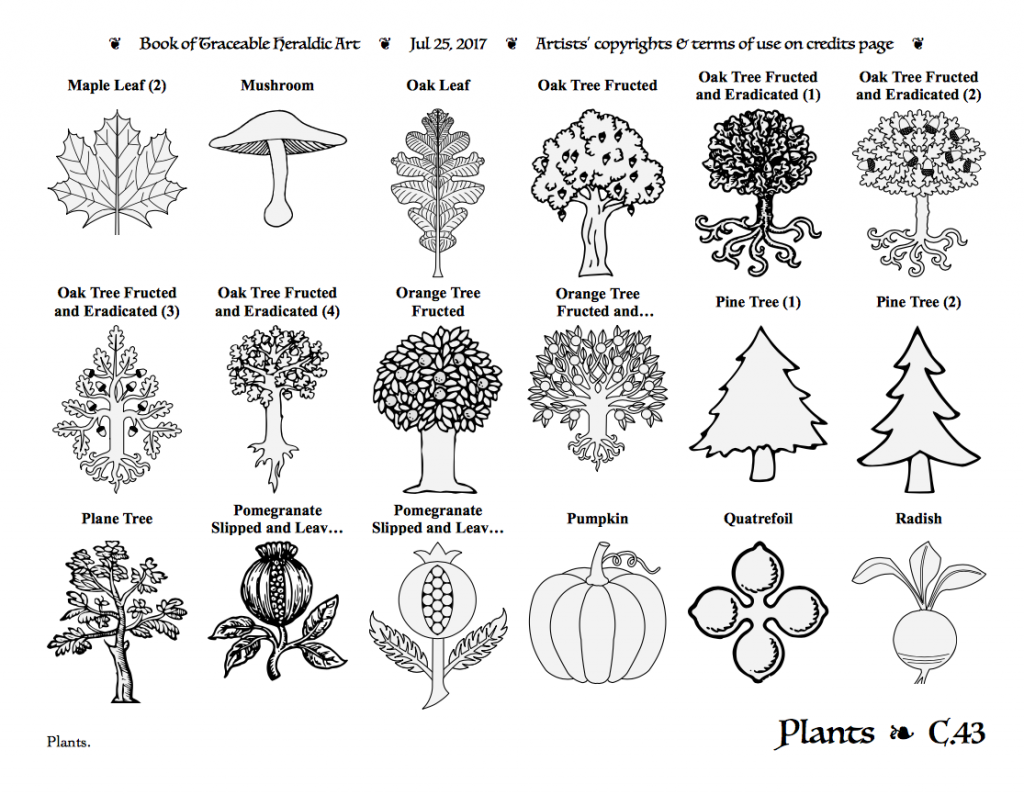Over three hundred and fifty images have been added to the Book of Traceable Heraldic Art since the November update, drawn from a variety of sources.
The set I’m most excited about is the first batch of 94 images from Torric inn Björn’s Heraldic Templates, which was published in 1992 and, as far as I know, is the earliest collection of art distributed specifically to facilitate tracing in construction of society armory. My sincere thanks to Lord Torric for granting permission for these images to be re-published here.
This booklet offers far more potential than its 56-page size would suggest, because it contains elements which can be recombined in multiple ways; for example, it contains a few illustrations of deer in various postures as well as examples of various types of antlers that can be mixed and matched together to create stags, elk, and reindeer in those positions. Þórý Veðardóttir has helpfully worked through a number of these combinations, ringing the changes on postures of dragons, wyverns, cockatrices and basilisks. We’ve got dozens more of these images still to process, and I look forward to getting them all online in the months ahead.
Another source of new images in this last round has been John Guillim’s 1611 A Display of Heraldry. While its engraved style with extensive shading contrasts with the pen-and-ink outline style used in most society submissions, the images are useful patterns for tracing that (with a bit bit of adaptation) can be used digitally as well, and I enjoy seeing material that dates from so close to our period of study. I’m particularly fond of his Dr. Seuess-ish eel and turkey.
I’m also continuing to work through the images from the 2007 Pennsic Traceable Art book, which yields over a dozen heraldic dog postures newly added to the collection this month, and from the Viking Answer Lady’s SVG Images For Heralds collection, which helped fill out some more of the many varieties of heraldic crosses.
The further I get into this, the more I realize how much remains to be done, so I’m looking forward to a productive new year as the collection continues to grow.


